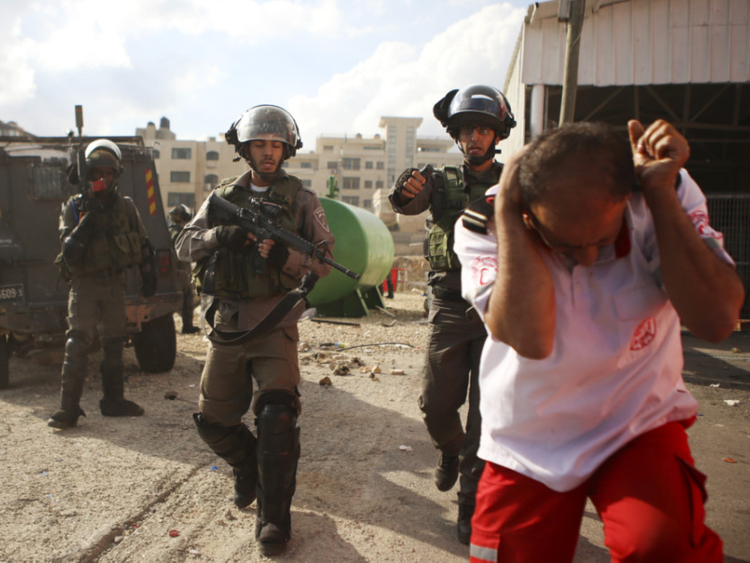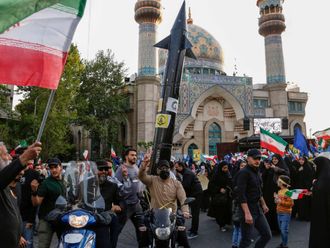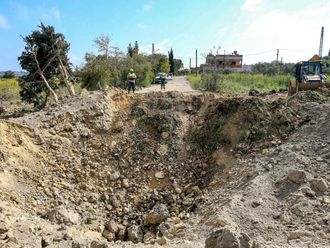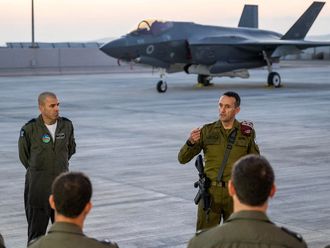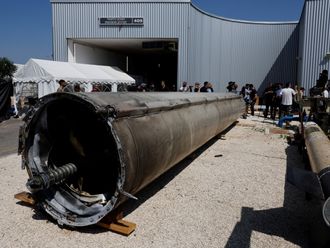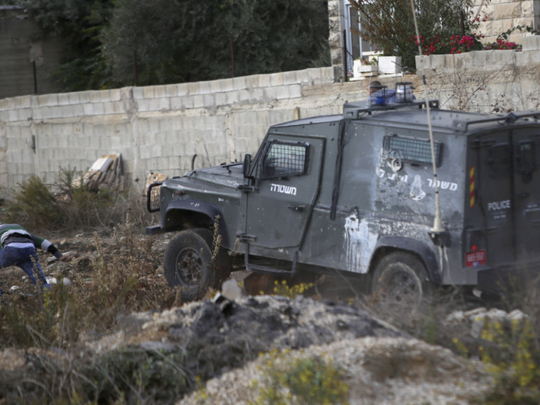
Ramallah: Recent videos show Israeli occupation soldiers shooting a wounded Palestinian at close range, pepper-spraying Palestinian medics, ramming a Palestinian with a jeep and threatening refugee camp residents with tear gas “until you die” unless they stop throwing stones.
Palestinians and Israeli human rights groups contend the images, many captured by amateur smartphone users, buttress long-standing allegations of excessive force — particularly amid a wave of Palestinian stabbing attacks in which top Israeli politicians and security commanders have encouraged forces to shoot to kill suspected assailants.
“There is a very clear message sent by those politicians and military commanders that this is how law enforcement should behave,” said Sarit Michaeli of the Israeli group B’Tselem, which documents rights abuses.
Israel’s army and police defended the actions shown in the videos, with the exception of an officer who was suspended over the tear gas threat.
‘Palestinian aggression’
“Our activities in all of the cases have been responses to Palestinian aggression,” said Lt. Col. Peter Lerner, an Israeli occupation spokesman. Israel itself has released several videos showing its forces shooting stabbers.
Video footage is increasingly central in the competition over international opinion — a contest Palestinians say they often lost in the past when it came down to their word against that of the Israeli military or Jewish colonists.
In 2007, B’Tselem began distributing video cameras to Palestinians in West Bank hot spots, such as the Israeli-occupied centre of Hebron, carved out for 850 Jewish colonists.
One of the first videos, showing a colonist woman harassing a female Palestinian neighbour, went viral, Michaeli said. About 200 Palestinians have B’Tselem-issued cameras today.
With the rise in smartphone use — 10-fold over five years — the impact of such amateur images has only grown.
Take several controversial videos that have emerged in recent days. One shows the aftermath of what Israeli police say was a stabbing attack of an Israeli soldier by 23-year-old Mahdi Mohtasseb last Thursday. The video begins with Mohtasseb lying face-down in a Hebron street — already wounded by Israeli fire, according to local activists.
A member of the Israeli occupation forces approaches and — as Mohtasseb slowly tries to lift himself — shoots him from about five metres. Mohtasseb is then shown lifeless and bloodied as Israel’s paramilitary border police inspect the body.
Shukri Mohtasseb, a cousin, said Mahdi Mohtasseb was planning on getting engaged and had no reason to carry out an attack. He maintained his cousin was unarmed. “The soldiers ... could have arrested him because he was injured, but they killed him in cold blood,” he said.
Since mid-September, over69 Palestinians have been killed by Israeli fire.Rights groups say Israeli occupation troops are often too quick on the draw and are rarely held accountable.
‘Extra-judicial execution’
Earlier this week, an Israeli military investigation cleared troops who killed 18-year-old Hadeel Hashlamoun at a Hebron checkpoint on September 22 — a shooting London-based Amnesty International said was an apparent “extra-judicial execution”. The teen was behind a metal barrier, several metres from the soldiers, when she was shot dead, Amnesty said, citing a witness. It later turned out she held a knife under her robe, but never pulled it out, the group said.
The occupation forces claim soldiers faced a “potentially life-threatening situation”.
Photos show Hashlamoun facing a soldier with his assault rifle aimed at her. Video of the aftermath shows her body lying next to a metal turnstile, behind the metal barrier that separated her from the soldiers.
The Israeli watchdog group Yesh Din said soldiers face little risk of criminal charges over alleged abuses. Between 2010 and 2013, only 1.4 per cent of Palestinian complaints led to indictments against soldiers, the group said. Lerner said military investigators are “completely independent” from the regular chain of command.
— AP


